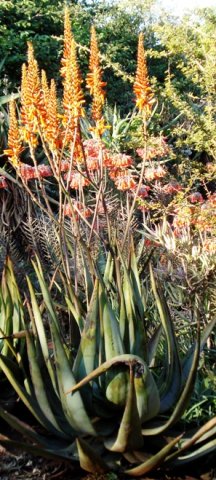Aloe cryptopoda

Author: Ivan Lätti
Photographer: Dorette Potgieter
The area around the De Hoop Dam abounds in Aloe cryptopoda. Variations in this plant relate to several features, including flower colour, shape, flowering time and plant size. The Steelpoort and Burgersfort areas have larger plants with more branching in the inflorescence panicles than the Zimbabwe or Botswana forms. The links among A. wickensii, A. lutescens and A. cryptopoda make study of this complex of species very interesting when plants from the wider distribution are compared.
The differences have become even more bewildering since certain attempts to combine them. The existence of natural hybrids in the veld does not make matters any easier. The plants are usually solitary, although small groups formed through division may occur. A mature plant will have around 50 leaves. They are lanceolate, attenuating towards the tips. The upper leaf surface may be deep green, reddish green or blue-green. The inflorescence branches both simultaneously or consecutive with conspicuous triangular bracts at the base of every branching. The perianths are cylindrical and somewhat three-angled. Their tips are slightly green.
The specific epithet cryptopoda means hidden foot, referring to the large bracts that clasp the pedicels of each separate flower (perianth), more or less obscuring it from view.
These and many more plants collected from the De Hoop Dam during its construction phase have brought much excitement and joy to the members of Operation Wildflower in the long lost days of legally collecting plants from sites earmarked for development. Plants were taken home with Department of Nature Conservation permits obtained on the day of collection for planting in gardens, never to sell. This now defunct citizen run Operation Wildflower system for indigenous plant saving once their destruction in nature was inevitable, lasted for more than half a century, conducted in organised manner in accordance with all regulations and bylaws from Johannesburg.
It is hard to see whether such a venture can ever be revived, although development still brings about much bulldozing of indigenous plants (Frandsen, 2017; Van Wyk and Smith, 2003; Reynolds, 1974; iNaturalist).

